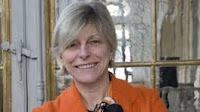 |
| Palazzo Chiablese |
The Palazzo Chiablese is a wing of the Royal Palace in Piazza San Giovanni, Turin.
It was named after the Duke of Chablais, second son of King Carlo Emanuele III. During his reign various improvements to the interior of the palace (1753- 54) were carried out under the direction of Benedetto Alfieri, a popular Savoyard architect of the era.
The building was the seat of the provisional government of France during the Napoleonic occupation and it was the home of Camillo Borghese and his wife Pauline Bonaparte.
Later it saw the birth of Margherita of Savoy, daughter of the Duke of Genoa and later first Queen of Italy (wife of King Umberto I).
Bombed during World War II, the property passed to the State in the 1950s and it was then used as the Superintendence headquarters. Then it housed the pupils of the Istituto Nazionale per le Figlie dei Militari Italiani (National Institute for Italian Soldiers' Daughters). Until 1995 it was home to the city's cinema archive now it is a museum and a place for concerts and exhibitions.
http://www.poloreale.beniculturali.it/index.php/it/il-complesso/palazzo-chiablese
Go to our Catalogue for Ebooks and Stories
 |
| Interior |
Palazzo Chiablese si trova a sinistra del Palazzo Reale, con l'entrata principale in Piazza S. Giovanni.
Risale al XVI secolo, fatto costruire dal duca di Savoia Emanuele Filiberto su nuclei abitativi preesistenti, l’ architetto Benedetto Alfieri nel 1753-54 diede unità architettonica al palazzo per ordine di Carlo Emanuele III che lo donò al secondogenito Benedetto Maurizio, Duca del Chiablese da cui prese il nome. Durante il periodo di occupazione francese di Torino fu abitato da Camillo Borghese e sua moglie Paolina. Con la Restaurazione, divenne residenza del re Carlo Felice, di Ferdinando duca di Genova, secondogenito di Carlo Alberto, e nel 1851 vi nacque Margherita, prima regina d’Italia (moglie di Re Umberto I) dal 1878 al 1900.
Bombardato durante la seconda guerra mondiale, passo poi al Demanio (1946), è stato dapprima sede dell'Archivio del Cinema ed ora ospita la Direzione Regionale per i Beni Culturali e Paesaggistici del Piemonte ed è sede di mostre d’arte.
Go to our Catalogue for Ebooks and Stories





































.jpeg)
.jpeg)

.jpeg)

